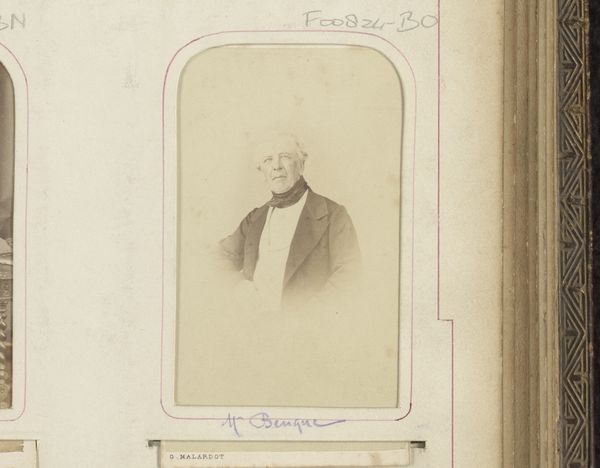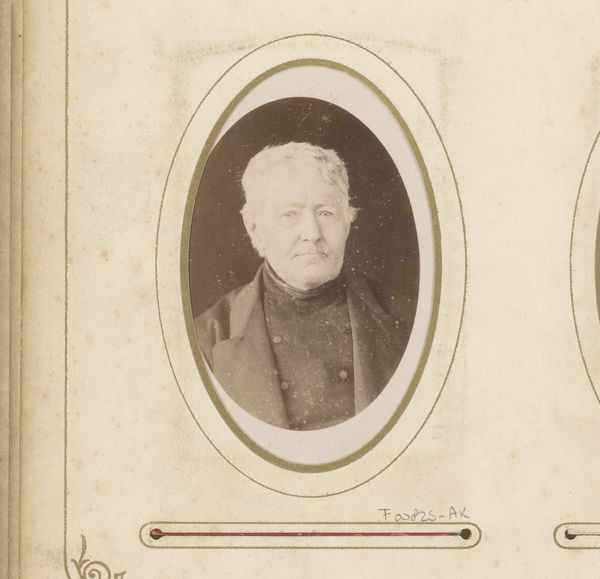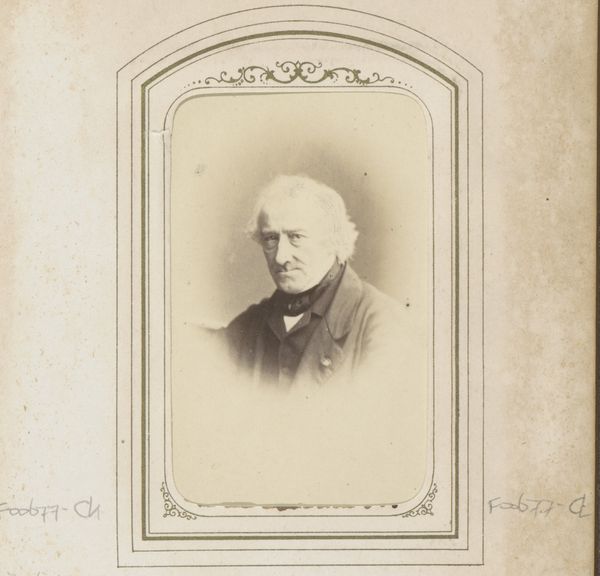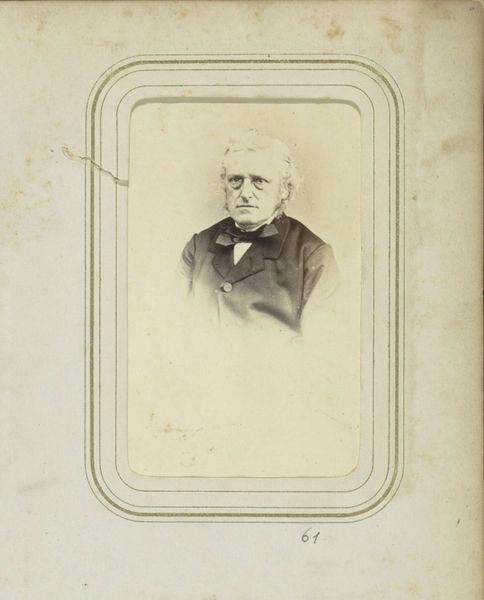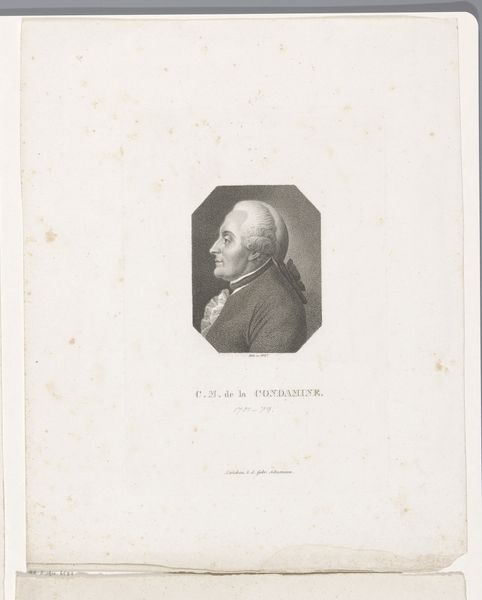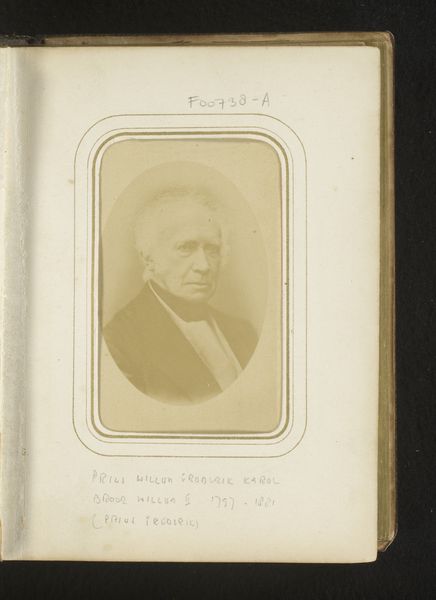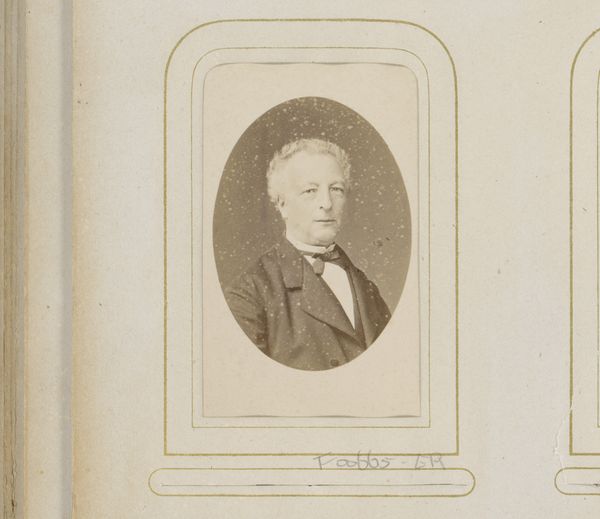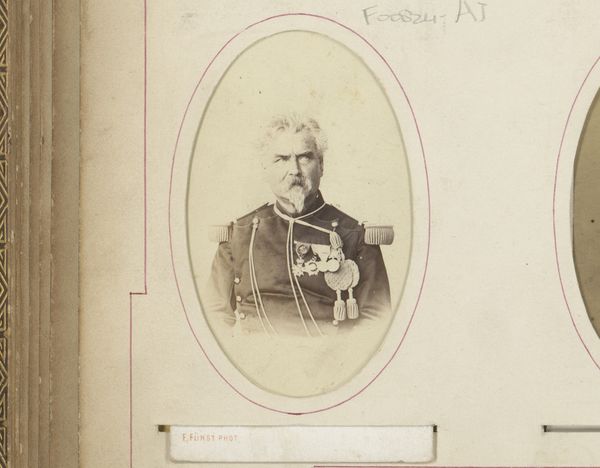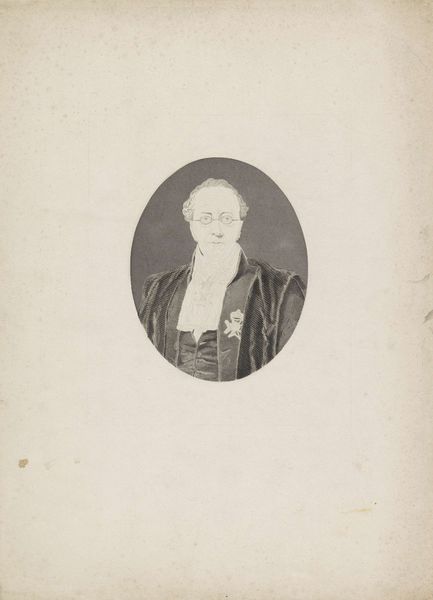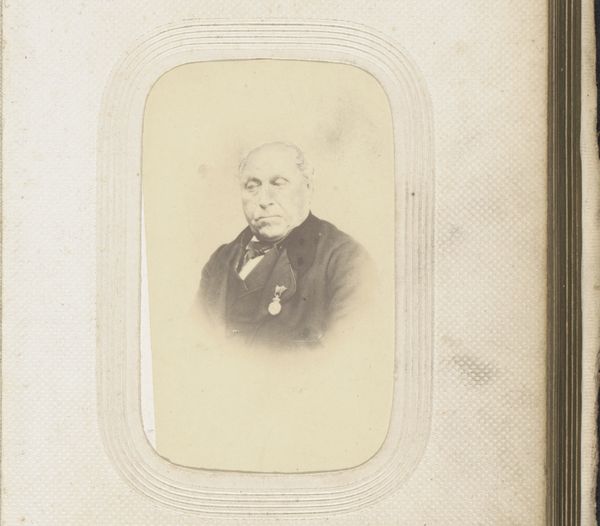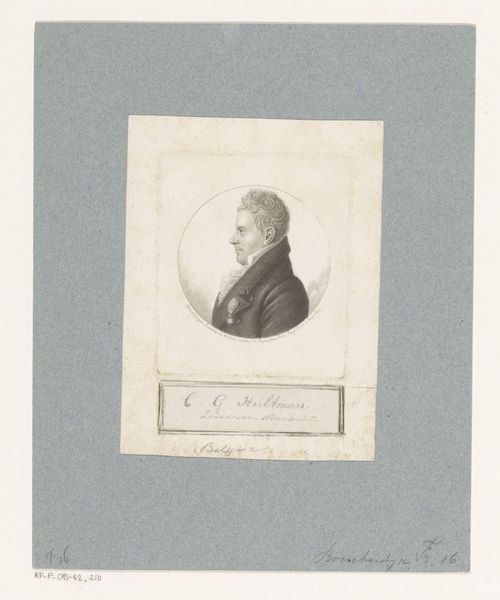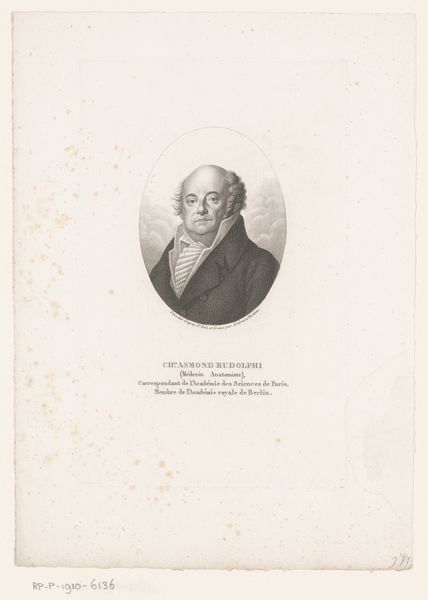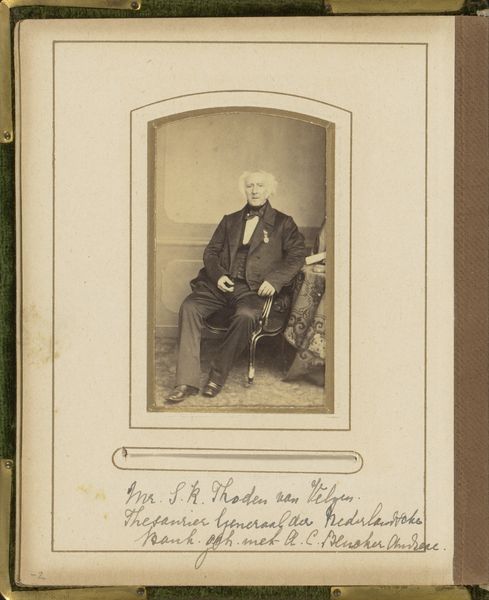
Dimensions: height 105 mm, width 60 mm
Copyright: Rijks Museum: Open Domain
Curator: This is a photographic portrait from sometime between 1864 and 1885, by Émile Fürst. The subject is a cleric identified as Mr. Fournier Evigne. Editor: The albumen print gives this photograph an almost spectral feel. There's something about the soft focus, the limited tonal range that emphasizes the frailty and reserve of the subject. It looks almost ghostly. Curator: Yes, photography in the mid-19th century served several social purposes. It was becoming more accessible to the middle class, who could then emulate the elite practice of commissioning portraits. This image signals that rise, while perhaps alluding to his societal standing as clergyman. Editor: It's fascinating to think about the materiality of this image. An albumen print uses egg whites to bind the photographic chemicals to the paper, talk about an everyday material being elevated to create art. Who knows the skill it took to craft this image, all the steps to make and then keep the image safe! Curator: It also underscores how these images circulated—presumably amongst family and perhaps within his religious community. The print, tucked away in an album, offers us today a rather unique view into the 19th-century clerical world. The careful mounting suggests value and a public role, but constrained within the personal context of a family album. Editor: Considering the context of the process adds another dimension. In many respects, it memorializes and elevates his social position. Someone took the time and spent the money on the materials. Labor, process, production, that means something! Curator: Absolutely. It's an intersection of personal identity and public representation shaped by the then emerging technology of photography, allowing broader access to portraiture beyond painting, with its inherent politics. Editor: Indeed, and a stark reminder that every photograph, no matter how seemingly simple, represents a material labor and set of choices from photographer and sitter alike. It allows us a glimpse of history we may never have received otherwise!
Comments
No comments
Be the first to comment and join the conversation on the ultimate creative platform.
